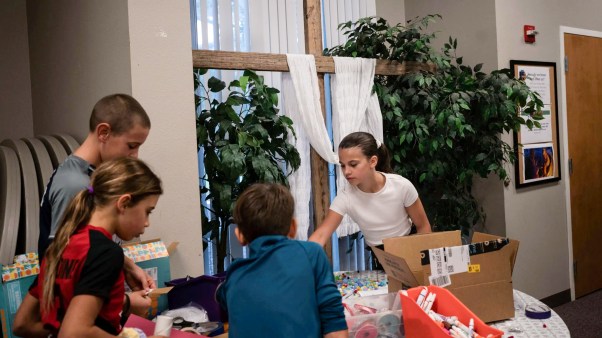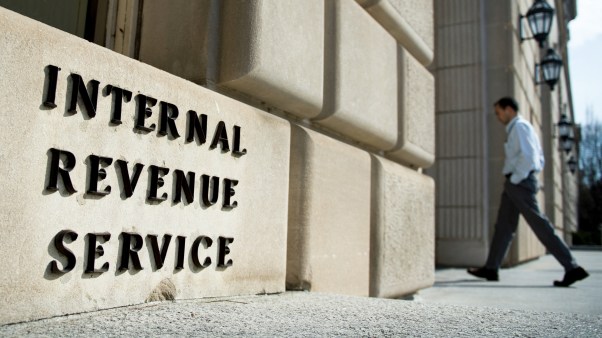The morning after Palm Sunday, a mysterious procession of red-clad figures enters the main square of Texistepeque, a small town in northwestern El Salvador. The talcigüines (Nahuatl for “devilish”) have just attended 8 a.m. mass at San Esteban Catholic Church and now, leather whips in hand, are striking whoever crosses their path.
Many visitors are eager to feel the sting.
Every year, tourists come from across the region to participate in the local Holy Week tradition. Some believe that each stroke of the talcigüines’ whips means God sees one less sin on their ledgers of wrongdoing. Others come only as observers of the unusual practice, which was developed out of Roman Catholicism, the Matthew 4 account of Satan tempting Jesus, and the local Indigenous Pipiles culture and dates back at least as far as 1850.
César Velásquez hopes these tourists make time to drop by his souvenir store, where he sells glasses, keychains, and calendars. In 2022, the designer created a special collection of talcigüin mugs, hoping to recoup some of the money he lost after the government canceled the event in 2020 and 2021 due to COVID-19.
Customers liked his work, but fellow congregants at his Assemblies of God church disapproved, accusing Velásquez of worshiping the Devil and of supporting the Catholic church. When he ran into fellow church members on the streets, some looked the other way. These reactions, along with what he calls the “excessive legalism and conservatism” of local evangelicals, led him to leave his church for one 12 miles away.
“Evangelicals in Texistepeque don’t even want to leave their homes so that people don’t think they’re participating in the festival,” he said.
But living in this small town, Velásquez feels he has little economic choice but to engage in the city’s largest event of the year. His latest design depicts a silhouette of San Esteban Church alongside a red figure.
Many of the evangelicals boycotting the festival are converts from Catholicism, who don’t approve of the holiday’s fanciful retelling of a serious passage of Scripture.
The event begins when the actors portraying the talcigüines and Jesus attend Mass. After the service concludes and the talcigüines begin whipping people, Jesus enters the scene, holding a small cross and playing a hand bell. Over the course of the morning, Jesus walks through the square as, one by one, the talcigüines dance in front of him and simulate blows in a choreographed fight. Eventually, each talcigüín lies down, defeated. Jesus steps on each one and keeps walking.
Around 11 a.m., all the defeated talcigüines lie down in front of the church in a line. A serene but triumphant Jesus walks over each one, a symbol of the triumph of good over evil, and enters San Esteban. The crowd applauds.
Historians consider the Salvadoran festival a relic of the pantomimes that Catholic priests used to evangelize Indigenous populations and believe the Franciscan’s habits inspired the talcigüines’ attire.
For years, the entire town threw itself into the festival. But as the country became more evangelical, many no longer wanted to be associated with anything that felt like an endorsement of Roman Catholicism or indigenous practices. (Currently, 44 percent of Salvadorans identify as Catholics, while evangelicals make up 39 percent.)
Born in Guatemala, Maynor Beltetón has lived in El Salvador for 25 years and pastors Iglesia Macedonia, in Texistepeque. Despite living in the city, the professor at the Instituto Biblico Castillo del Rey (Castle of the King Biblical Institute) has never seen the talcigüines festival in person and discourages Christians from attending.
“This is not harmless dramatization,” he said. “It has an origin, a purpose, and a theological meaning that are incompatible with evangelical Christianity.”
Spotlighting the demons and promoting the idea that a whiplash can remove one’s sin undermines Jesus’ role in salvation, argues Beltetón, quoting 1 Corinthians 10:21, which says, “You cannot drink the cup of the Lord and the cup of demons too; you cannot have a part in both the Lord’s table and the table of demons.” He also believes the festival gives undue prominence to the Devil and confuses new believers about what is and isn’t the gospel.
“Although it includes the figure of Christ, its purpose is not to exalt him and his redemptive work,” he said.
Ronald Peñate, who briefly pastored a small Texistepeque congregation in 2017, described the event as “just a dramatization.”
Peñate sees the demonization of the festival as emblematic of a conservatism that keeps the church looking inward and keeps it from growing. But this attitude put him at odds with church members who asked Assemblies of God denominational leaders to remove him after only three months on the job. Peñate obliged and now pastors a church in a nearby city.
Peñate wanted to encourage his former congregation to see the talcigüines event as an evangelism opportunity and an opportunity to engage those from out of town.
Meanwhile, though Iglesia Macedonia is just five blocks away from San Esteban church and the city park that hosts most of the festival, Beltetón has no plans to visit the park during Holy Week.
“They’re going to whip you,” he said. “You don’t have time to preach, to show the true victory of Christ.”













